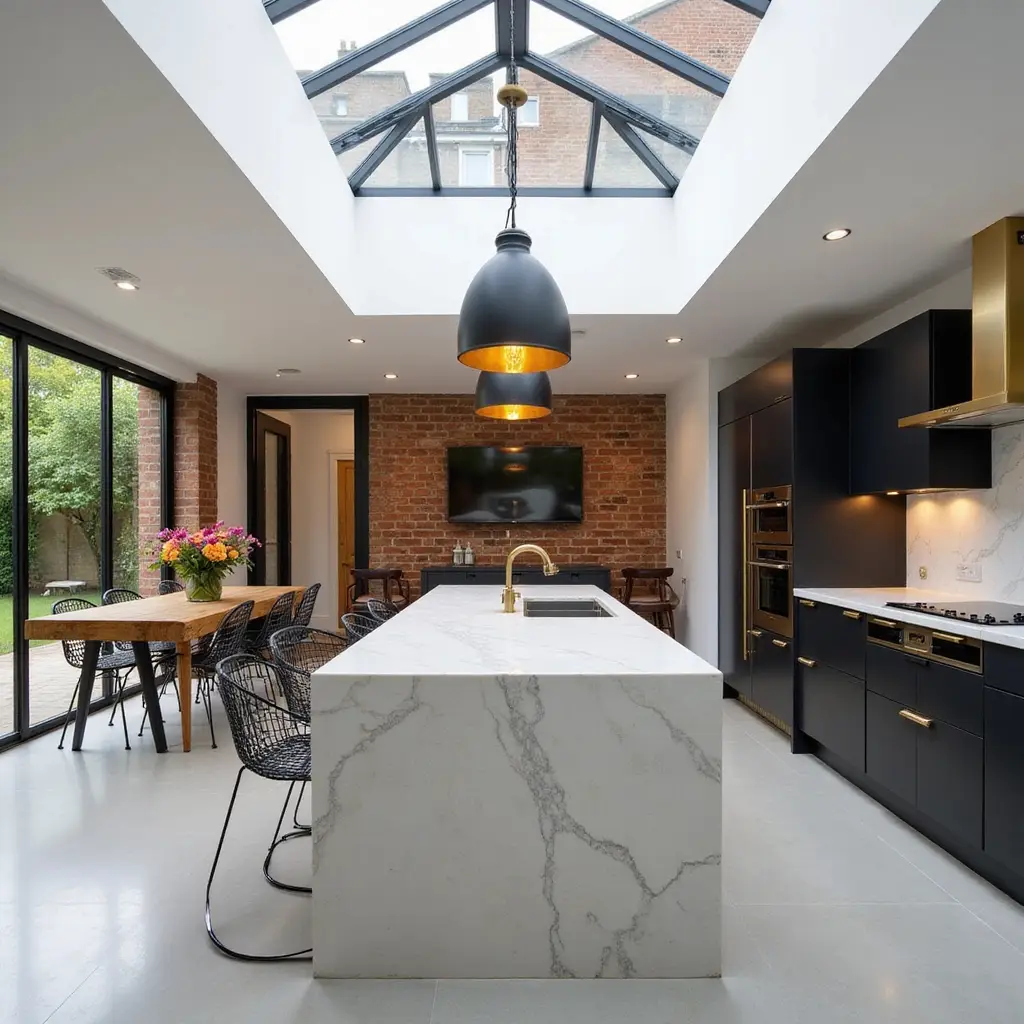
Alterations and Extensions
Guide to Different Types of House Extensions
Need more space but happy where you are? A home extension adds room for family, work, or lifestyle upgrades—without the stress of moving. It’s a smart way to enhance your home’s value, comfort, and functionality.
But with so many different extension options available, it can be difficult to know where to start. To help get you started, we’ve pulled together a list of all the different extension options available, so you can find the right fit for your home and budget.
One of the most budget-friendly options, single-storey extensions add space to the ground floor of your home, often to the back or side of the property. This is a great choice if you’re looking to increase the size of the kitchen, living room, or dining room. If you want to add light and depth to the extension, consider a pitched roof, skylights, or bi-fold doors, which invite lots of natural light.
Full-width Extensions
If you’re after a dramatic change, a full-width extension opens up the entire back or side of the house, creating a much bigger open-plan space in the home. These extensions are ideal if you love to entertain or have big plans for your living area.
Full-width extensions aren’t limited to a certain storey either – they can be built as a single-storey extension or can significantly increase the size of your home with a double-storey.
Double-storey Extensions
For those needing more space, double-storey extensions are an excellent option, allowing you to add space both upstairs and downstairs at the same time. This also typically means the extension will look more natural against the original property.
While it’s 50-70% more expensive than a single-storey, a double-storey extension is actually more cost-effective per square meter since you have already laid the foundations. The cost will also depend on factors like location, size, roof type and finishes.
Rear Extensions
Many choose to add extensions to the back of their homes, as this is where there’s often the most available space. Rear extensions are an excellent way to use empty space in your back garden and will be hidden from the street which makes them much easier when it comes to planning permission. If you’re a keen gardener and not willing to give up outdoor space, this might not be ideal for you, but if it’s more square foot you want, then this may be a good option..
Side Return Extensions
If your home has an alleyway or narrow space at the side, why not put it to good use? A side return extension makes use of the wasted space between your home and the neighbouring property, extending the side of your home to fill it.
This type of extension is very popular because it is cost effective and straightforward while still adding a decent amount of space to your property. If your house is the right shape, a side return extension is ideal to increase the size of your home without sacrificing your garden.
For those needing more space, double-storey extensions are an excellent option, allowing you to add space both upstairs and downstairs at the same time. This also typically means the extension will look more natural against the original property.
Over-structure Extensions
If extending outwards isn’t an option, you may want to build an existing structure like a garage or single-storey extension. By making use of the building’s existing footprint, over-structure extensions allow you to keep your garden the same size while also being more cost-effective than single-storey extensions, as they don’t require an additional foundation.
Wrap-around Extensions
Want the best of both worlds? Wrap-around extensions combine a rear and side return extension, allowing you to dramatically increase the amount of space in your home.
They are ideal for creating a spacious open-plan kitchen, a dedicated home office or additional living areas. But keep in mind, the larger size and more complex construction makes this a pricier option. It also requires a lot of external excess, so it isn’t suitable for those with limited garden space.
Loft Conversions
Turning your loft into a usable room is a great way to expand the space in your home. There are a few different styles to choose from, including:
- Dormer – A box-shaped addition with a flat roof
- Mansard – A full height extension across the whole roof
- Hip-to-gable – Extending one side of a sloping roof
However, not all lofts are suitable for converting. It’s important to consider the available floor space, the height and pitch of the roof, and the positioning of the stairs to the new storey. There may also be obstacles such as water tanks or chimney stacks that need to be moved.
Explore our dedicated Loft Conversions page to see what’s possible and how we can help you make the most of your home.
Conservatories
Looking to bring something bright and airy into your home without the need for planning permission? A conservatory or orangery could be the answer. Often built with a uPVC frame and fully glazed on both the sides and roof, conservatories are an affordable way to flood your space with natural light. Modern designs are far more effective at regulating temperature than their older counterparts, making them comfortable and usable all year round.
Whether you’re considering a garden room, a quiet retreat, or a light-filled extension to your living space, we offer tailored advice and design solutions to suit your property and lifestyle.
Explore our dedicated Conservatories & Orangeries page to see what’s possible and how we can help you make the most of your home.
Outbuildings
Beyond the construction costs of extending your home, you will also need to budget for other expenses. Some of these may be expected while others may be surprising.
Explore our dedicated Outbuilding conversions page to see what’s possible and how we can help you make the most of your home.
Extension Considerations
Most extensions will require some level of planning permission and there’s certain considerations that you need to meet. If you fail to do this, you could ultimately be forced to destroy your extensions, resulting in both money and time wasted – not to mention a lot of frustration.
